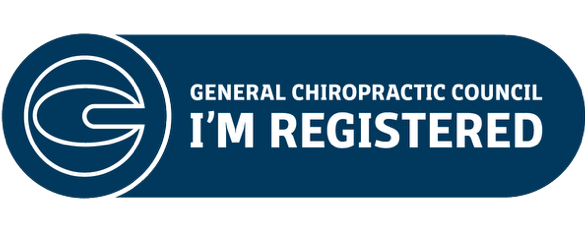Evolution and anatomy
When I first started at Spine, I bought conventional high street shoes (like most other people). I didn’t realise the implications. So, I did some research and I thought I would share it.
First let’s begin with some basic foot anatomy. Your feet are designed with many muscles and thousands of nerve endings put in place to keep you stable and moving how you should. Any factor that influences that function has a knock-on effect of the entire body.
The very common issue today is the loss of a normal foot arch. This changes our postures and the mechanics of walking. (Looking at the pictures to the left, stand up and look at your own feet, do you have a flat arch?).
The modern world has evolved from barefoot to shoes, unfortunately footwear has been designed and manufactured for comfort, not for function.
Barefoot shoes benefits:
-
The flat flexible sole allows activation of the muscles in your feet!
-
The wide anatomical structure allows toes spreading, aiding in balance and structural stability!
-
Standing and walking loads are distributed more evenly through the lower limb reducing joint related problems!
-
Made for all ages, with benefits in balance, foot structure and gait as young as toddlers!
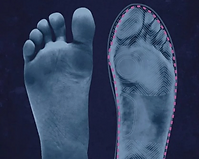
Did you know?
Wearing footwear significantly restricts the shape of the foot on weight bearing, stifling the ability for the forefoot to widen and the toes to fan as they are meant to. Those who are habitually barefoot actually have anatomically wider feet! (1)
Obviously, the ideal would be to walk everywhere barefoot. This is not realistic, but there is a middle ground – I’ll come on to this later.
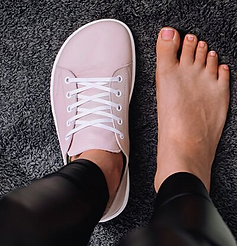
Arch supports and orthoses:
The conventional modern shoe has been designed with arch supports, reducing the activation of our muscles at the bottom of our feet. Let me ask you this, what happens to a muscle when we stop using it?
As I’m sure you guessed – over time, these muscles weaken, collapsing the arch resulting in flat feet. (2)
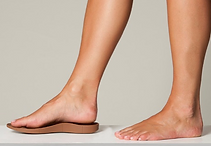
The modern-day solution to this problem (despite very weak evidence for its effectiveness) is to prescribe orthotics to artificially hold the arch up – perpetuating the original issue. (3)
Continued use of conventional footwear actually changes how you walk, affecting the weight distribution and load on the lower limb joints. (1)
The link between abnormal loading while walking and knee osteoarthritis is well researched. Flat, flexible footwear has been shown to significantly reduce the weight bearing loads put through the knee during movement (8/9). Showing footwear has a chronic effect on the mechanics of the body and degenerative processes of the body. (4)
But for every problem, there is a solution! A 2021 study found just 6 months of daily activity in minimal footwear increases foot strength by 57.4% on average, in turn having the potential to contribute to healthy balance and gait. (5)
Barefoot shoes and children / toddlers
Barefoot or minimalistic shoes are for all ages, it is never too early to see the effects!
Footwear can have a lasting impact on foot development. Not only is the natural motion restricted, but long-term use can cause structural changes of the foot. (1)
A study done in 2022 found toddlers wearing barefoot shoes were found to have higher foot arches, improved balance and a lower abnormal gait patterns compared to those wearing conventional shoes (6/7).
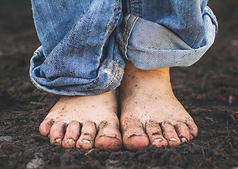
Summer is here, and with it has come a huge array of body deteriorating footwear!
Shoes to avoid this summer:
Birkenstocks
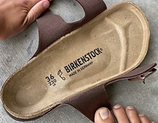
Crocs
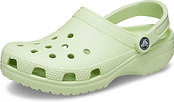
Sliders
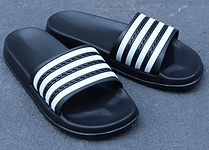
These shoes have a negative impact on postural stability and will not be helping your body (10).
We are here to help!
To find out more information, speak to us! We have developed a list of appropriate shoes that are proven to help.
Reference List
-
Franklin, S. et al. 2015. Barefoot vs common footwear: A systematic review of the kinematic, kinetic and muscle activity differences during walking, Gait & posture, 42(3), pp. 230–239. doi: 10.1016/j.gaitpost.2015.05.019.
-
Holowka, N. B., Wallace, I. J. and Lieberman, D. E. 2018. Foot strength and stiffness are related to footwear use in a comparison of minimally- vs. conventionally-shod populations. Scientific reports, 8(1), p. 3679. doi: 10.1038/s41598-018-21916-7.
-
Herchenröder, M., Wilfling, D. and Steinhäuser, J. 2021. Evidence for foot orthoses for adults with flatfoot:dv a systematic review. Journal of foot and ankle research, 14(1), p. 57. doi: 10.1186/s13047-021-00499-z.
-
Shakoor, N. et al. 2010. Effects of common footwear on joint loading in osteoarthritis of the knee. Arthritis care & research, 62(7), pp. 917–923. doi: 10.1002/acr.20165.
-
Curtis, R. et al. 2021. Daily activity in minimal footwear increases foot strength. Scientific reports, 11(1), p. 18648. doi: 10.1038/s41598-021-98070-0.
-
Gimunová, M. et al. 2022. How barefoot and conventional shoes affect the foot and gait characteristics in toddlers. PloS one, 17(8), p. e0273388. doi: 10.1371/journal.pone.0273388.
-
Quinlan, S. et al. 2022. The long-term effects of wearing moderate minimalist shoes on a child’s foot strength, muscle structure and balance: A randomised controlled trial. Gait & posture, 92, pp. 371–377. doi: 10.1016/j.gaitpost.2021.12.009.
-
Paterson, K. L. et al. 2017. Effects of footwear on the knee adduction moment in medial knee osteoarthritis: classification criteria for flat flexible vs stable supportive shoes. Osteoarthritis and cartilage, 25(2), pp. 234–241. doi: 10.1016/j.joca.2016.10.001.
-
Mann, D. 2018. The best and worst shoes for knee osteoarthritis, Everyday Health. Available at: https://www.everydayhealth.com/hs/osteoarthritis/best-worst-shoes-knee-osteoarthritis/ (Accessed: March 27, 2023) .
-
Chander, H. et al. 2021. An analysis of postural control strategies in various types of footwear with varying workloads. Footwear Science, 13(2), pp. 181–189. doi:10.1080/19424280.2021.1899297.

